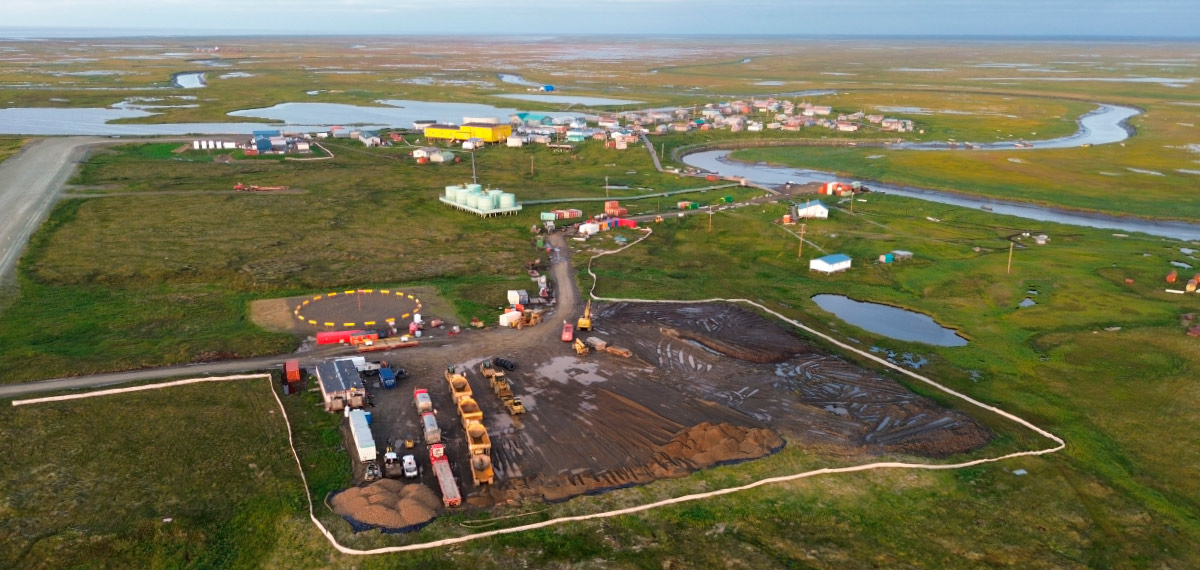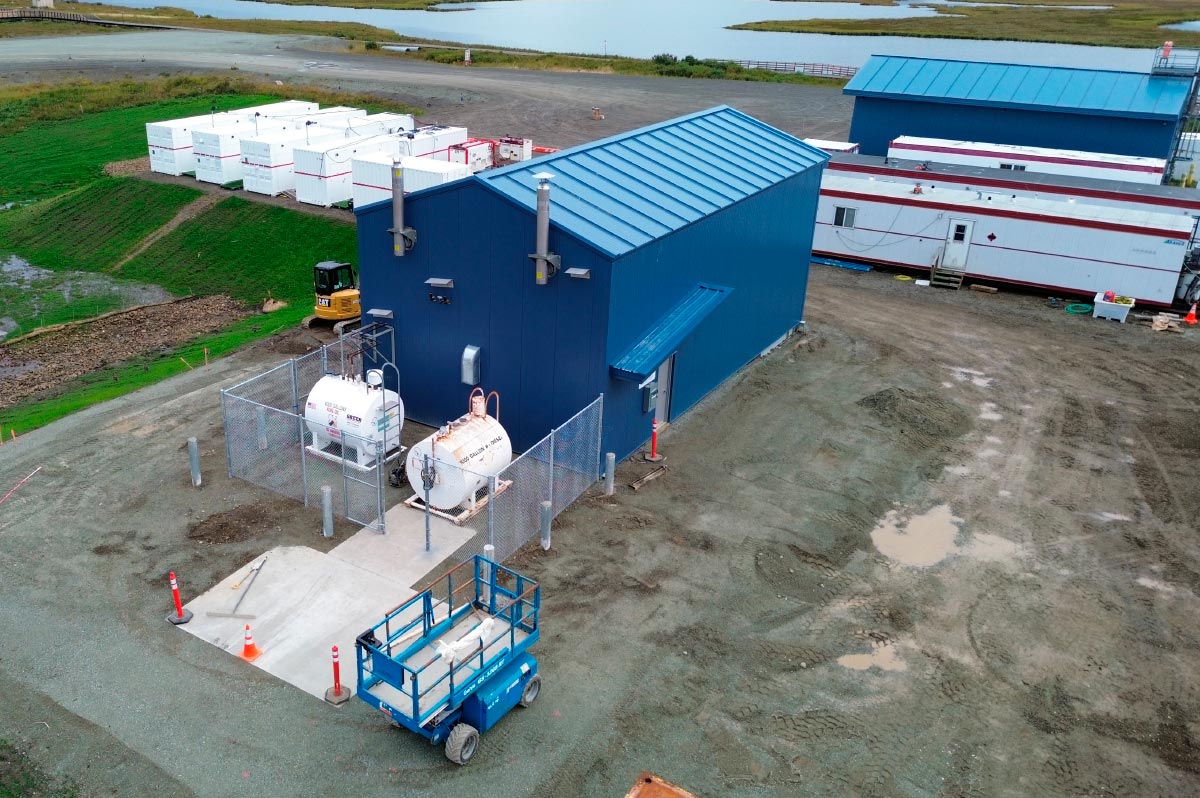Photo provided by Tumet Industries, LLC
Photo provided by Tumet Industries, LLC
early 82 percent of Alaska communities are inaccessible by road and rely on Alaska’s aviation system for transportation and the shipment of materials and goods.
This dependence on aviation means there is a consistent need to maintain and upgrade rural airports.
Similarly, rural airports are owned and operated by various entities; however, the network is much more extensive.
Of the 700 rural airports registered in the State of Alaska, 235 are owned and operated by DOT&PF, with support from the Division of Statewide Aviation. This division assists the department’s mission to provide safe and efficient movement of people and goods across the state by implementing the Alaska Aviation System Plan and managing the airport capital improvement program for the department.
This plan recognizes Alaska’s dependence on aviation, its unique operating environment, lack of basic infrastructure, financial constraints, and the belief that regional diversity is important. The systemwide plan sets the vision for Alaska’s aviation network by identifying airport improvement needs, setting priorities for funding, proposing aviation policy, documenting the existing system using various forms of data and media, and continuously supporting the system through special studies, updates, and reviews.
“Rural airports are lifelines for rural communities not connected by roads or the Alaska Marine Highway,” says Troy LaRue, operations manager for the Division of Statewide Aviation. “They are also major economic contributors to the overall Alaskan economy. Many goods make multiple stops before reaching their final destination, and every community benefits from it.”

Photo provided by Cruz Construction, Inc.
From there, the Aviation Project Evaluation Board receives project nominations from the airport planner. The board scores nominated projects based on specific criteria, including whether a community is solely dependent on their airport for year-round access to other parts of the state. From there, scored projects are sorted within DOT&PF’s Airport Capital Improvement Plan depending on anticipated federal funding available. Board-scored projects are placed in the spending plan queue to await funding. Lower-scoring projects may sit in the queue until funding becomes available.
While in the queue, projects are designed, environmental considerations are addressed, and DOT&PF determines if it has all the easements and property ownership pieces in place to meet funding and construction requirements. The project scope, schedule, and estimate are also updated. Once all those steps are completed, then DOT&PF seeks funding through AIP grants and requests necessary state legislative authority authorizing the acceptance of federal grant funds and required state matching funds. In this stage, project bids are developed, advertised, and a contractor is selected. The final phase of this multi-step process is construction and completion. Once a project is completed, DOT&PF’s responsibility for the operations and maintenance continues for another twenty years, depending on the project type and on FAA grant assurances.
The Chevak Airport Rehabilitation Project, scheduled to start later this year, will rehabilitate the runway, taxiway, apron, and airport access road. The goal is to expand the runway safety area and correct runway grades to meet line-of-sight requirements. Additional improvements include rehabilitating and re-leveling the snow removal equipment buildings; replacing airfield lighting, FAA navigational aids, wind cones, segmented circle, and culverts; building a supplemental wind cone access; and the application of dust palliative. The project was awarded at $17.3 million. Total cost will be determined once the project is complete.
Project Manager, Cruz Construction, Inc.
“The Kongiganak Airport is their highway for supplies, groceries, and medical transport for getting to Bethel for appointments and treatment,” says Murphy.
The $55 million Kongiganak Airport Improvement Project is slated for completion in September.

Photo provided by Cruz Construction, Inc.
Associated General Contractors of Alaska member company Edge Survey and Design worked as a subcontractor on both the Kongiganak and Brevig Mission airport projects.
Aside from construction projects, Douglas says there is another part to rural airports that often goes unseen. She says few people realize that only a handful of employees are responsible for all aspects of operations and safety in these facilities. In addition to assisting planes as they land and take off, rural airport employees also manage homeland security, firefighting and medical services, and runway plowing. Rural airport employees go through extensive training, and Douglas estimates that it usually takes about a year to bring a new employee completely up to speed with all aspects of operations.
“We like to highlight them,” says Douglas. “We are blessed to have such dedicated individuals in DOT&PF who are making a difference and keep Alaska moving.”